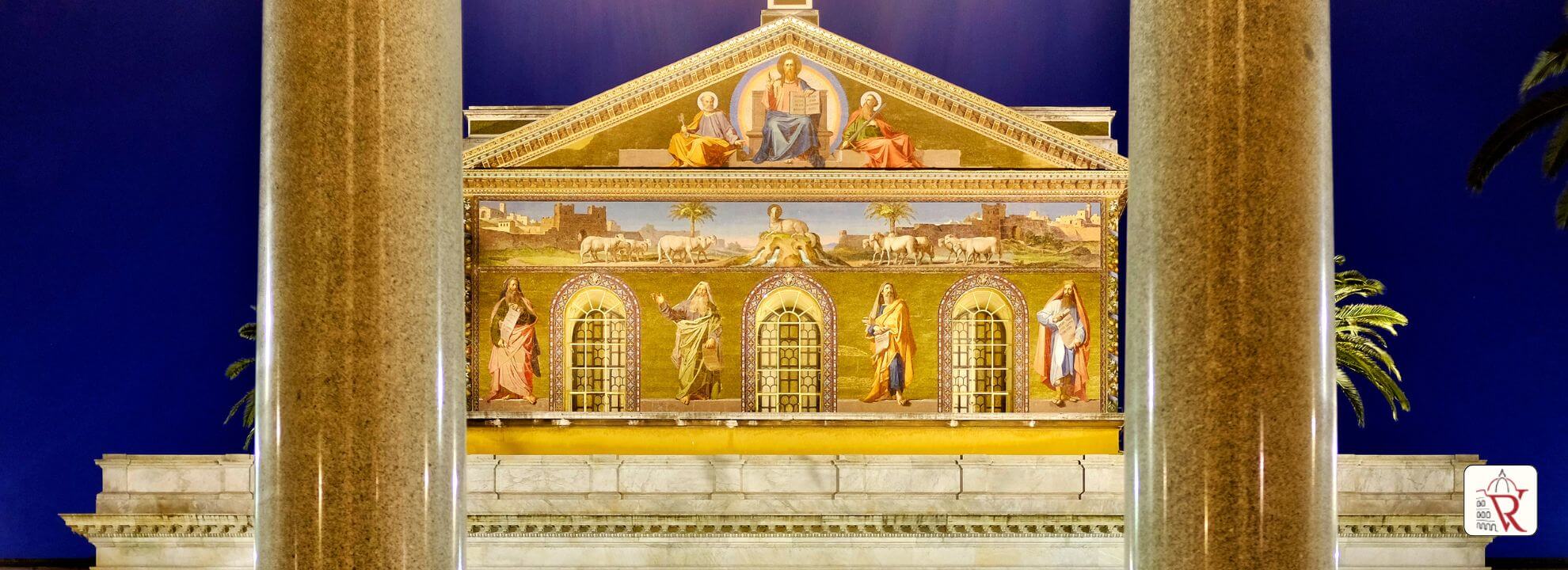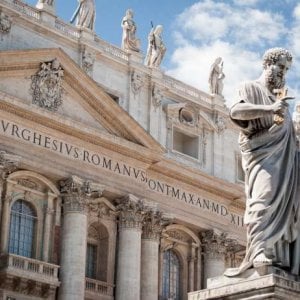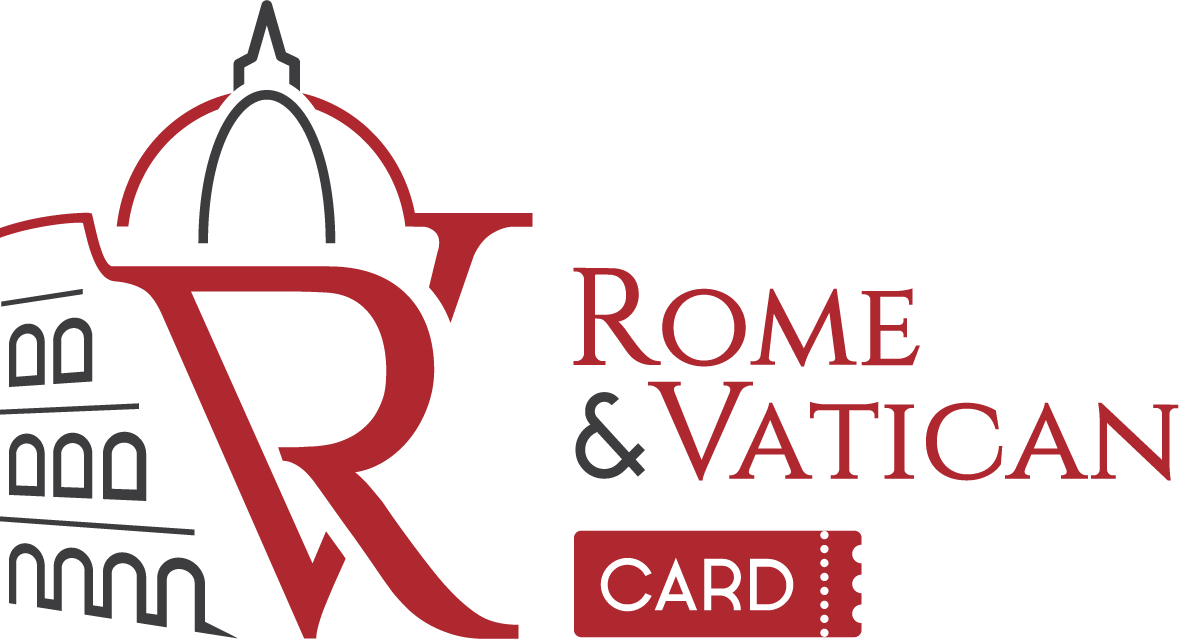4 Major Basilicas in Rome: how to tour all the Basilicas of Rome in one-day & distances between them
- 9 min read
Exploring the 4 major basilicas in Rome in just one day is a unique journey blending faith, art, and history. With the right route, you can walk or use public transport to visit St. Peter’s, St. Mary Major, St. John Lateran, and St. Paul Outside the Walls, discovering their Holy Doors, opening hours, and iconic landmarks along the way.


Vatican Museums + Sistine Chapel + St John and St Peter's Basilica | Guided Tour
Why the 4 Major Basilicas in Rome Are a Pilgrim’s Dream
Rome is not just a city — it’s an open-air museum, a spiritual heart, and a timeless stage where faith and history meet. Among its treasures, the 4 major basilicas in Rome stand apart as the most important pilgrimage sites: St. Peter’s Basilica, St. Mary Major, St. John Lateran, and St. Paul Outside the Walls.
Although many visitors believe it takes several days to see them all, the truth is that with a bit of planning, you can experience this extraordinary journey in just one day. As I have said, it’s not only a tour but also a pilgrimage through centuries of devotion.
The historical and spiritual importance of the 4 major Basilicas in Rome
Why the Basilicas of Rome are called Papal Basilicas?
The 4 major basilicas in Rome are known as Papal Basilicas because they are directly connected to the Pope. Each has its own Papal throne and a Holy Door — opened only during Jubilee Years.
The symbolism of the Holy Doors
As has been noted, Holy Doors are more than architectural features. They symbolize the passage from sin to grace, from the ordinary world into a sacred space. Walking through them is one of the most powerful experiences a pilgrim can have.

Vatican Museums + Sistine Chapel + St John and St Peter's Basilica | Guided Tour
1. Walking Route: From St. Peter’s Basilica to St. Mary Major
⛪Why St. Peter’s Basilica ss among the 4 major Basilicas in Rome
Certainly the most famous church in the world, St. Peter’s Basilica is built over the tomb of the Apostle Peter. It is the center of Catholicism, a masterpiece of Renaissance art, and a place where millions gather every year.
🕓Location and Opening hours of St. Peter’s
- Address: Piazza San Pietro, Vatican City
- District: Vatican
- Hours: Daily, 7:00 AM – 7:00 PM (April–September); 7:00 AM – 6:30 PM (October–March)
- Best Time to visit St. Peter’s: Early morning to avoid long queues.
📍Where is the holy door in st peter’s basilica
The Holy Door (Porta Santa) is located on the far right side of the main entrance. It is sealed except during Jubilee Years.
🚶Walking Route from St. Peter’s Basilica to St. Mary Major
Leaving St. Peter’s Square, the city unfolds as both a pilgrimage and a cultural journey. The route takes you through some of Rome’s most iconic sites before reaching St. Mary Major.
Key stops along the way:
- Castel Sant’Angelo – From mausoleum to fortress, this monument offers breathtaking views over the Tiber.
- Piazza Navona – A short detour brings you to this lively square filled with fountains and energy.
- Pantheon – A living connection between ancient Rome and Christian tradition.
- Piazza Venezia – Home to the Altar of the Fatherland, symbolizing Italy’s unity.
- Colosseum & Roman Forum – A walk through history where emperors once ruled.
Finally, after strolling along Via Merulana, you’ll arrive at St. Mary Major.
👉 Tip: Start early in the morning, as the walk takes about 1 hour and 30 minutes if you stop at the landmarks.
🚌Alternative Route by Public Transport
- Metro: Ottaviano (Line A) → Termini (Line A), then a short walk to the basilica.
- Bus: Line 40 from Piazza Pia near Castel Sant’Angelo to Termini.+

Vatican Museums + Sistine Chapel + St John and St Peter's Basilica | Guided Tour
2. Walking Route: From St. Mary Major to St. John Lateran
⛪Why St. Mary Major is a Papal Basilica
St. Mary Major is Rome’s largest church dedicated to the Virgin Mary. As I have shown, it is the only major basilica to retain its original structure since the 5th century. Its golden mosaics shine like the stars of Bethlehem.
🕓Location and opening hours of St. Mary Major in Rome
- Address: Piazza di Santa Maria Maggiore, Rome
- District: Esquilino / Monti
- Hours: Daily, 7:00 AM – 6:45 PM
- Best Time to visit St. Mary Major in Rome: Late morning, when the light enhances the mosaics.
📍Where is the Holy Door of St. Mary Major of Rome
The Holy Door is located on the left-hand side of the main entrance, a reminder of the basilica’s deep Marian devotion.
🚶Walking Route from St. Mary Major to St. John Lateran
The path connecting these two basilicas is shorter but filled with meaning, linking two of the most sacred places in Rome.
Key stops along the way:
- Via Merulana – The straight avenue that directly connects the two basilicas.
- Church of St. Alphonsus Liguori – A hidden gem with the original icon of Our Lady of Perpetual Help.
- Piazza San Giovanni – As you approach, the majestic façade of St. John Lateran comes into view, a moment of awe and reverence.
👉 Tip: This walk takes only about 15–20 minutes, making it the easiest stretch of the pilgrimage.
🚌Alternative Route by Public Transport
- Metro: Termini (Line A) → San Giovanni (Line A)
- Bus: Line 16 connects Termini with San Giovanni.

Vatican Museums + Sistine Chapel + St John and St Peter's Basilica | Guided Tour
3. Walking Route: From St. John Lateran to St. Paul Outside the Walls
⛪Why St. John Lateran Is the Cathedral of Rome
Contrarily to what many believe, St. Peter’s is not the cathedral of Rome—St. John Lateran is. As I have said, it is the Pope’s official seat and the oldest basilica in the West.
🕓Location and Opening hours of St. John Lateran
- Address: Piazza San Giovanni in Laterano, Rome
- District: Laterano
- Hours: Daily, 7:00 AM – 6:30 PM
- Best Time to visit St. John Lateran: Afternoon, when the crowds from Vatican tours have thinned.
📍Where is the Holy Door of St. John in Laterna
The Holy Door is located on the far left of the main entrance, symbolizing its role as Rome’s mother church.
🚶Walking Route: From St. John Lateran to St. Paul Outside the Walls
This is the longest stretch of the pilgrimage but also the most rewarding.
Key stops along the way:
- Scala Santa (Holy Stairs) – Just across from the basilica, these stairs are said to be the very ones Christ climbed in Jerusalem before His trial.
- Basilica of San Clemente – A layered church with underground ruins spanning centuries of history.
- Via Ostiense – Following this ancient road south, you retrace the steps of pilgrims who walked here for centuries.
- Pyramid of Cestius – A surprising Egyptian-style monument on your way toward San Paolo.
Finally, you arrive at the peaceful St. Paul Outside the Walls, where the tomb of the Apostle Paul rests.
👉 Tip: If the full walk feels long, consider splitting it with a metro ride halfway through.
🚌Alternative Route by Public Transport
- Metro: San Giovanni (Line A) → Termini → switch to Line B → Basilica San Paolo.
- Bus: Line 792 from San Giovanni directly toward Ostiense.

Vatican Museums + Sistine Chapel + St John and St Peter's Basilica | Guided Tour
4. End of the Route: St. Paul Outside the Walls (San Paolo Fuori le Mura)
⛪Why St. Paul Outside the Walls Is One of the 4 Major Basilicas in Rome
Built over the tomb of St. Paul, this basilica is quieter and less crowded than St. Peter’s but equally majestic. As a matter of fact, it offers a contemplative ending to your pilgrimage.
🕓Location and opening hours of St. Paul Outside the Walls
- Address: Piazzale San Paolo, Rome
- District: Ostiense
- Hours: Daily, 7:00 AM – 6:30 PM
- Best Time to visit St. Paul Outside the Walls: Late afternoon, when the golden light floods the cloisters.
📍Where is the Holy Door of St. Paul Outside the Walls
The Holy Door is placed at the main entrance, welcoming pilgrims who conclude their journey here.
Distances Between the 4 Major Basilicas in Rome
- St. Peter’s → St. Mary Major: ~4.5 km (1h 30m on foot)
- St. Mary Major → St. John Lateran: ~1 km (15–20m on foot)
- St. John Lateran → St. Paul Outside the Walls: ~5 km (1h 20m on foot)
Altogether, the full walk is about 10 km and can be done in one day with pauses.

Vatican Museums + Sistine Chapel + St John and St Peter's Basilica | Guided Tour
Tips for Pilgrims and Tourists
- Best time of year: Spring and autumn, to avoid extreme heat.
- Dress code: Shoulders and knees covered—these are active places of worship.
- Accessibility: All basilicas are wheelchair accessible, with elevators where needed.
FAQs About the 4 Major Basilicas in Rome
What are the 4 main basilicas in Rome?
They are St. Peter’s, St. Mary Major, St. John Lateran, and St. Paul Outside the Walls.
How to see the basilicas of Rome?
You can walk the entire route in one day or use metro and bus connections between them.
Can you just walk into churches in Rome?
Yes, entry is free, but dress respectfully.
Where is Pope John Paul II buried?
Inside St. Peter’s Basilica, at the Altar of St. Sebastian.
What’s the difference between a basilica and a cathedral?
A cathedral is the official church of a bishop, while a basilica is a title given by the Pope for its historical or spiritual importance.
Can you just walk into St. Peter’s Basilica?
Yes, entrance is free, but expect security checks and queues.
What to see in Rome not touristy?
Neighborhoods like Trastevere, Testaccio, and Garbatella offer a more authentic Roman vibe.
Why is it called St. Paul Outside the Walls?
Because it was built outside the Aurelian Walls of ancient Rome.
Can I see the Pope in Rome?
Yes, during the Wednesday General Audience or Sunday Angelus in St. Peter’s Square.
What is the 7 church walk in Rome?
It’s a traditional pilgrimage visiting 7 major churches, including the 4 basilicas plus 3 other important ones.

